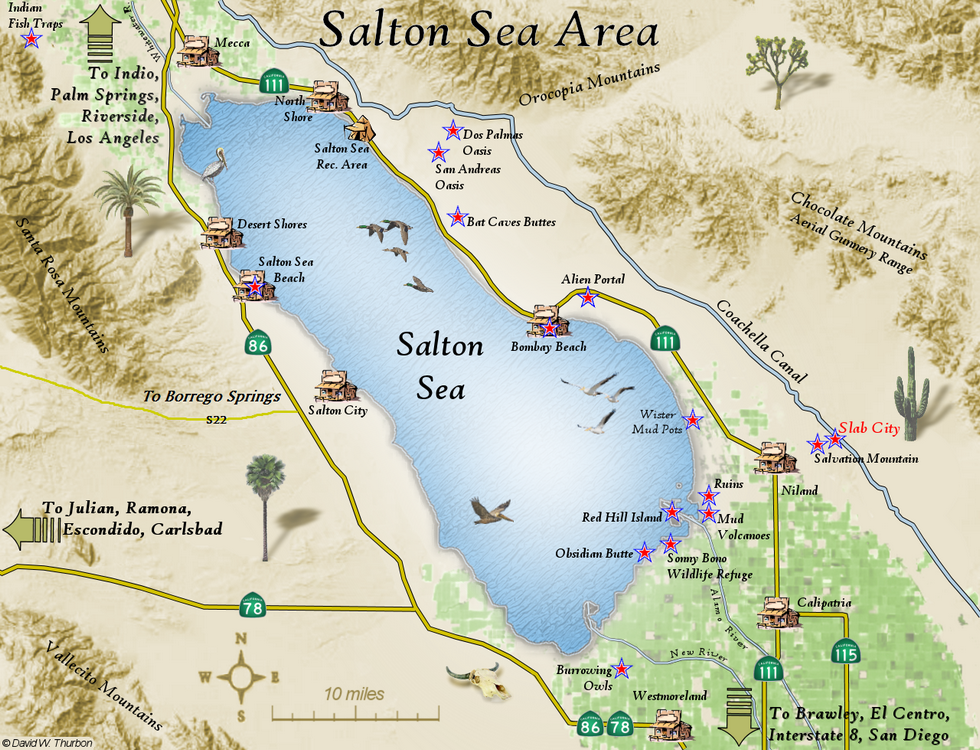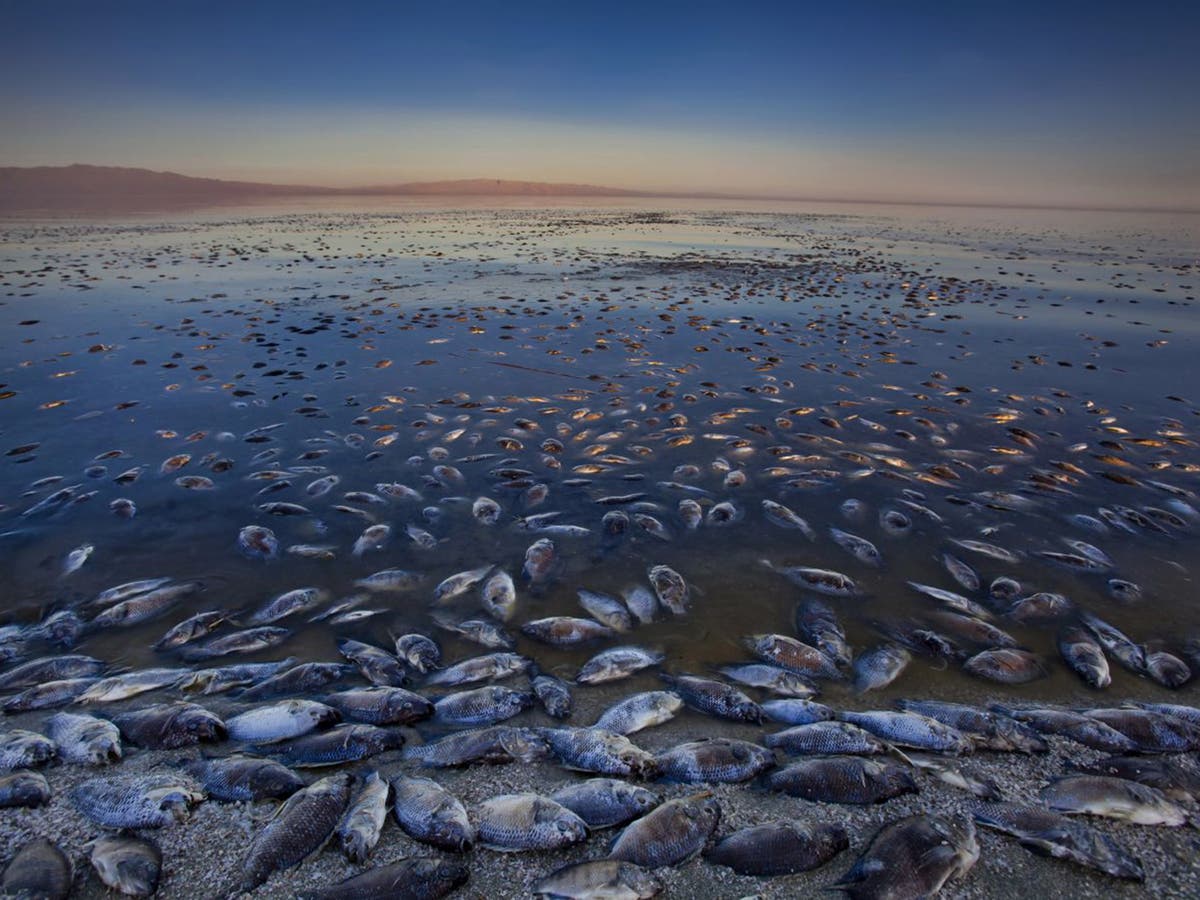The background of among The United States and Canada’s most polluted bodies of water. The United’ States century-old aspiration to seize and divvy up every decrease of water that could be wrung from its most arid stretches began with a flooding. A private company called the California Advancement Business (CDC) finished a canal in 1901 that zigzagged across the state’s boundary with Mexico in order to link the Colorado River to a dry riverbed that striving farmers had actually currently begun to section off on their own, regarding the pronouncement by the freshly established Imperial Valley Press that the area constituted the most productive body of dry land on the continent.
Books in Review
The Settler Sea: The golden state’s Salton Sea and the Consequences of
Colonialism Only two years later on, the CDC’s canal was full of silt, and the consumers who had actually paid up-front for legal rights to water that might no longer be provided started filing claims.Read here How To Play Sic Bo Casino Game At our site The CDC dug a new ditch alongside the original canal, however in its desperation to act promptly, the firm neglected to build any kind of ways of regulating how much of the river was drawn away right into this new channel: If the Colorado flooded, the excess water had nowhere to go but towards the Imperial Valley. To make issues worse, 1905 was an abnormally wet year, and by fall the Colorado was streaming with the same pressure as Niagara Falls. The CDC’s diversion held, yet that only served to channel the entire river downhill into the valley’s facility, a large salt plain then called the Salton Sink. It would certainly take two years prior to the river was consisted of. Once it was, The golden state had a brand-new body of water, the Salton Sea, nearly two times the size of Lake Tahoe.
The Salton Sea was developed before the Hoover Dam, before Lake Powell, prior to the aqueducts that stretch for numerous miles across the West. However there were many more new water functions on the horizon: The Bureau of Reclamation, produced to create a system of nationally-aided irrigation for the dry reaches of the far West, began constructing dams throughout the region in the very first decade of the 1900s. It additionally got control of many private water systems in order to fund the rate of the water supplied to farmers and locals of the future neighborhoods that were being built by city developers.
The West came to be dependent on these water supply as soon as they were constructed, also as their forerunner, the Salton Sea, was slowly transforming right into an unique and toxic spots. The so-called sea’s salinity began to rise as soon as it was formed, due to the fact that its water vaporized progressively in the ruthless sunlight. Over the following years, the lost water started to be restored by the runoff from the acres of farms and feedlots spreading out throughout its southerly side. However as the container was filling up, the overflow was turning the Salton Sea into one of the most contaminated bodies of water in the West- a lake that produces a sulfuric smell of eggs and kills migrating birds by the thousands. The western shore, on the other hand, was littered with sediment from tools testing by the United States military, and along the eastern coast you can find a tourist town called Bombay Coastline that would certainly be all but deserted in the 1970s after being flooded with overflow. Bombay Beach has actually since located a 2nd life as a musicians’ colony that, beginning in 2015, has actually organized a yearly biennale that costs itself as a renegade party of art, music, and philosophy that occurs on the actual side of western human being. Yet anywhere around the Salton Sea, the shoreline is receding, leaving hundreds of acres of polluted playa- the planet that stays after the water has evaporated- which, once it becomes airborne on the wind, creates some of the most awful bronchial asthma prices in California.
In The Inhabitant Sea: The golden state’s Salton Sea and the Repercussions of Manifest Destiny, Traci Brynne Voyles, a teacher of females’s and sex research studies at the University of Oklahoma, brochures the startling events that produced this environmental catastrophe along with the efforts of policy-makers and personal interests to maintain a grip on the location they dubbed the Imperial Valley. The story of the Salton Sea is an exposing one, aiding us comprehend the limits of the United States’ capability to overcome and control the landscape.
Voyles secures the beginning of the desert’s despoliation to the arrival of inhabitants in the West. Thousands gravitated to the Colorado River in the 1880s and ’90s for the same factor that Aboriginal people had actually done so for hundreds of years: Its 1,450-mile run, from the Rocky Hills to the Gulf of California, supplies one of the most trustworthy water resource in the vast desert that covers North America’s underbelly. Not that the Colorado was ever predictable: In some years the river was an enjoyable stream, in others a horrible rapid. After designers continuously stopped working to constrain the river in 1905, a resolute Los Angeles Times declared that American design will certainly not for long be frustrated even by a mighty and treacherous Colorado River. And yet it was: Even in the 1920s, the river troubled a lot of the region’s citizens to such a degree that The golden state Legislator Hiram Johnson added inhuman to the listing of pejoratives tossed at the Colorado, in a speech asking for it to be tamed right into a slave of the human race. If the Southwest was to end up being a land of plenty for the white settlers that now lived there, the initial step was to suppress the Colorado River.
While the Anglos of the Imperial Valley may have been amazed by the Colorado’s wild revolutions, the Cahuilla and Kumeyaay individuals, that had actually lived there for centuries, were well accustomed with its propensity to periodically run so strongly that it rerouted itself away from the Gulf of California and right into the Salton Sink.
Current Problem
When that happened, the Cahuillas who resided in the valley would certainly escape to capitals along its side and, once they had actually reestablished their negotiations, sustain themselves by fishing in the freshly created body of water. After the water vaporized, they dug wells deep into the exposed valley floor and depend on mesquite trees for nourishment. At the same time the Kumeyaay, whose conventional lands straddle today’s California-Mexico boundary, practiced flood irrigation along the Colorado’s banks. As with the Maidu individuals of the Sierra Nevada, who recognized woodland fires to be an all-natural part of their homeland’s life process, the Cahuilla and Kumeyaay thought of flooding not as something that ought to be stopped but as a natural process that life needed to be oriented about.
The white settlers of the Imperial Valley, at the same time, were baffled by the reaction of the Indigenous peoples to events the inhabitants located tragic. When a salt-mining operation in the Salton Sink, set up by a business owner to gather the plentiful down payments left by previous floodings, was removed in the 1890s, its proprietor stood thrown for a loop as the Cahuilla laborers he had worked with packed their valuables, deserted the salt field, and headed into the hills.
Voyles makes a convincing case that the Salton Sink likely would have been swamped in 1905 even without the CDC’s carelessness. Nevertheless, the new arrivals to the Imperial Valley refused to adapt to the Colorado’s cycles the way the Cahuilla had. When the Salton Sea was developed after the flood of 1905, scientists forecasted it would fully evaporate by the 1930s, but settlement prevented this process from running its course. Instead, as increasingly more people relocated right into the region and established farms, even more overflow was directed towards the Salton Sea, turning it into a natural dumping basin.
For the past century, after that, each year has actually seen a few of the sea vaporize, only for that water to be replaced by runoff infected with, to name a few things, DDT and untreated human sewer. Making matters worse was the military testing done by the United States in the 1940s and ’50s. The lake, like nearly half the land in the West, is the lawful residential property of the federal government, and the Protection Division and the Flying force made use of that by crashing more than a loads aircraft into the Salton Sea during World War II training exercises; after the war, nuclear weapons researchers went down thousands of dummy bombs right into its waters, a number of which included raw uranium.
Because of this, Voyles calls the Salton Sea an archive of twentieth-century contaminants. And as the Southwest s current megadrought- which started two decades earlier- worsens, it’s no more possible to pretend that those toxins will remain sequestered forever. The sea’s shoreline has actually been receding rapidly since 2018, after the expiration of a contract in between the Imperial Irrigation Area and San Diego that drawn away water to stop the contaminated lake bed from being revealed. By 2025, as much as 40 percent of the sea’s quantity could be gone, leaving behind tens of countless acres of sand laced with contaminants and quickly kicked up by the breeze. One in five kids in Imperial Region currently struggles with asthma, and a greater proportion of them are confessed to emergency clinic for deadly episodes than anywhere else in the state. The even more the sea’s water evaporates, the a lot more dangerous the air will certainly come to be for the families of the farmworkers that labor downwind.
In addition to this physical legacy of inhabitant manifest destiny, Voyles graphes the less noticeable systems of oppression that created the facilities required for the farming, defense, and tourism sectors to make use of the region, observing that the labor of creating this world about, because of, and for the Salton Sea commonly came from a specific group of workers: incarcerated ones. In the very early 20th century, Hispanic and Indigenous men who had actually been arrested for public drunkenness were routinely impressed right into mining granite from Superstition Mountain, which neglects the Salton Sea, for the product after that made use of to lead the area’s roadways. The Salton Sea has also led to the Cahuilla people’s dispossession, not only of the lifeways that were when notified by the Colorado’s rhythms yet also of the land the US government ceded to them. When the Salton Sea was formed, near fifty percent of the Torres Martinez Cahuilla booking, a 24,000-acre parcel, the very first section of which was granted 1876, was inundated with floodwater, ruining a number of the reservation’s wells. Rather than provide assistance to the Cahuilla farmers to construct new waterworks and grow the land that was left, officials at the Bureau of Indian Matters gladly promoted the declaring of their water civil liberties by white inhabitants and afterwards shared shock when members of the tribe left the reservation to find work elsewhere. It was an impossible situation: As Voyles puts it, government officials were blithely really hoping to transform the Native people into dryland farmers- dryland farmers, that is, without enough land or sufficient water to create a crop.
Public officials also attempted to remake the location around the Salton Sea into a lake resort, complete with special resort hotels, water sports facilities, coastlines, and every other sort of service and accommodations that will draw in wintertime travelers and health-seekers. Day Palm Beach sprouted up on the north shore in 1926, complied with by the North Coast Yacht Club and, to the east, Bombay Beach. By the 1950s, stars like Frank Sinatra and Rock Hudson were vacationing on one coast of the Salton Sea while uranium-laced bombs were gone down into it beyond.
 A Dead Sea |








